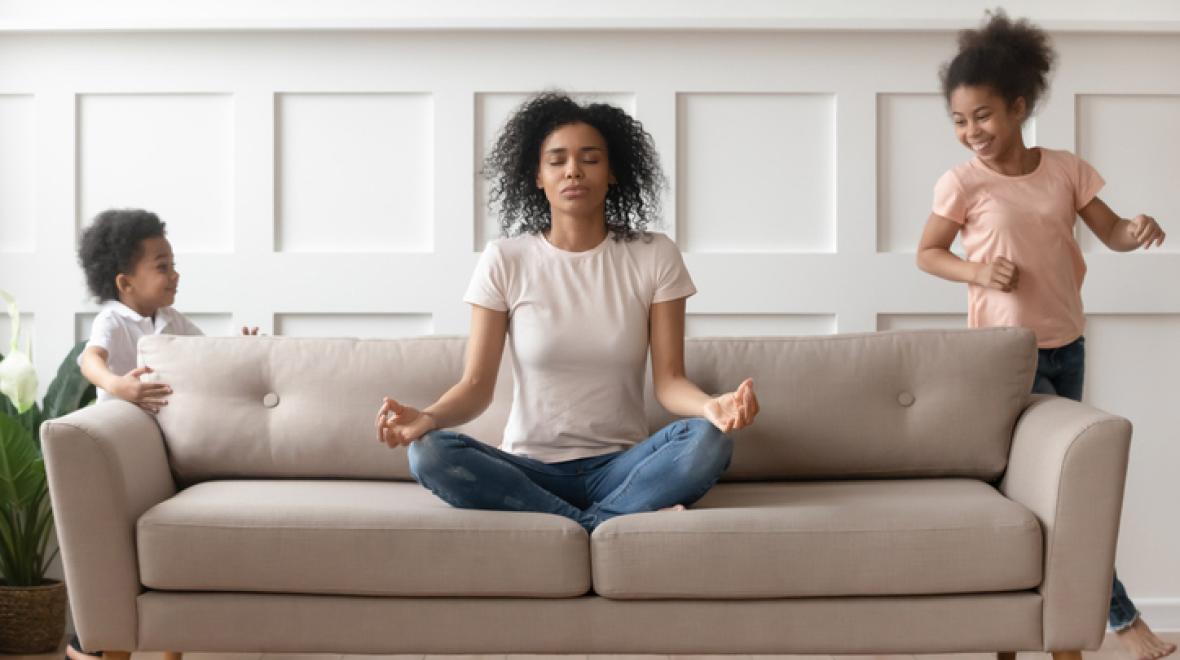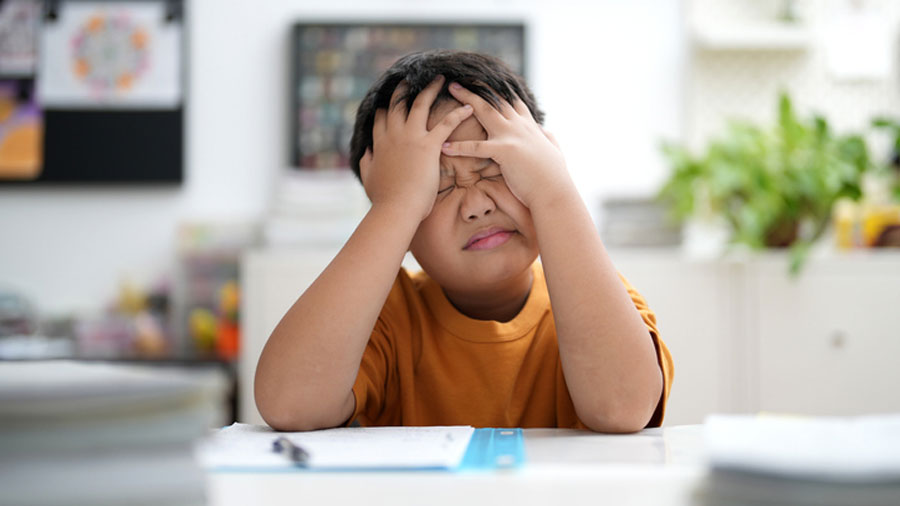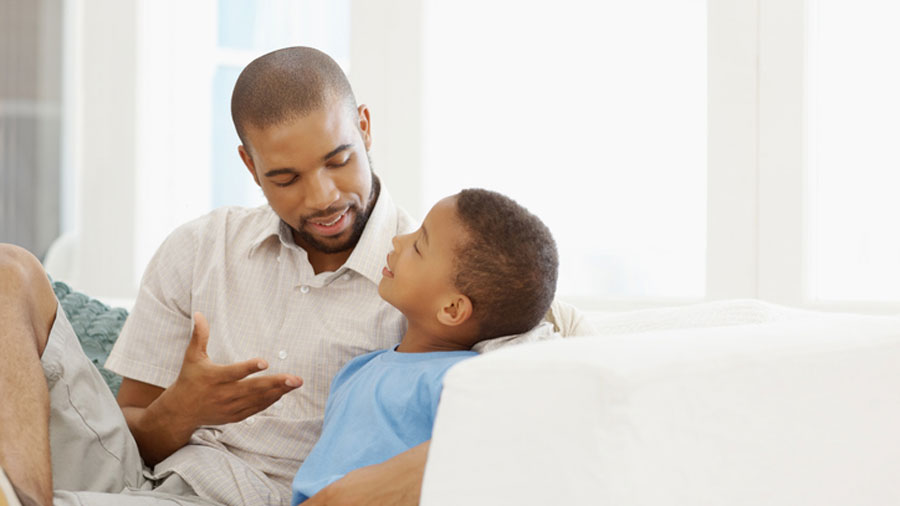
What’s your worst habit when your child’s behavior pushes your buttons? Do you yell? Blame, shame or criticize? Shut down and cry? Become punitive and preachy? Or just grab a beer and your phone?
Most of us know better than to think these are effective approaches to influencing good behavior in our kids. But, like most complex and challenging competencies, the ability to choose and execute positive parenting strategies depends on whether we are calm and rested.
Emotional regulation is the most essential parenting tool. Without it, we can’t access the parenting wisdom and capabilities we possess.
Why emotional self-regulation matters
Children push our emotional buttons all day and all night. Even if our emotional reservoirs aren’t depleted by a stressful day, their typical behavioral challenges can trigger our worst behaviors.
For example, you might be enjoying a delightful afternoon, and your five-year-old will push your two-year-old over, grinning impishly. You might even say something to your oldest that’s as regrettable as what I said when I was in that situation: “What’s wrong with you?” I recognize so many wrongheaded things about my reaction. But, hey — live, forgive and learn, right?
There isn’t a parent on the planet that doesn’t lose it sometimes. Lose what? Our ability to self-regulate.
In the above example, I knew better than to think shaming my son would help shape his ability to inhibit his impulses. My problem was not taking a moment to calm myself so that I could remember my campaign to teach my son our “gentle touch” rule. If I had calmed myself first, I would have been able to note my toddler was fine, and then check in with my son about his feelings, before doubling down on explaining gentler ways to play.
Yelling, shaming, blaming, lecturing and punishing do not teach children, let alone inspire them to play nicely with others. His curiosity about his power to push over an adorable sibling is normal. But his capacity to override this impulse will best develop through others’ modeling, appreciating his natural empathy, practicing gentle touch and experiencing joy through cooperative play.

Emotional regulation in kids
Parents, fatigue and stress aggravate our potential for emotional regulation. It’s important to remember, our children are emotional and fatigued, too! It’s hard for them to follow rules, do stuff they don’t want to do, inhibit aggressive impulses when they're frustrated, persist when failing at challenging tasks, and cooperate with what feels like a forced march through a day filled with other peoples' agendas.
Adults struggle with the same things. However, children and teens won’t have their emotional regulation systems fully developed until they’re in their mid- to late-20s. That's why parents have to lead on this one.
What happens when parents don’t self-regulate?
It’s not just that we can’t enact good parenting skills if we are upset and emotionally dysregulated; we can really hurt our children. The association between parental dysregulation and child mental health problems has been well-established by cross-sectional and longitudinal studies. A recent meta-analysis of 53 studies showed that parental self-regulation played a decisive role in child self-regulation and adjustment.
The take-home is that if we don’t have the skills to stay calm when dealing with our negative emotions, triggers and distress, we can dump it on our kids and they suffer. If we can’t calm our negative reactivity, we can’t choose optimal problem-solving approaches for challenging situations.
The neuroscience behind self-regulation
Ideally, parents provide love, security and opportunities for learning, all of which are compromised when they’re frequently triggered by their children’s messy behaviors. When we “lose it,” it means that our amygdala, the “threat-detection system,” has been triggered. In evolutionary terms, the amygdala is often referred to as the reptilian part of the brain; once triggered, we want to attack or escape. We aren’t thinking, we are reacting.
The amygdala is nested deeply in the limbic system, which is involved in basic emotional processing, most of which occurs beneath our conscious awareness. As the most powerful and rapid-firing neural system in the brain, it saved our ancestors’ lives when they responded to life-threatening dangers and predators. Once triggered, this neural network releases adrenaline in a nanosecond, pumping energy to your entire body for the fight or flight job of reacting to threats. It doesn’t waste time with firing neurons in our thinking brains — the slower neural pathway in a crisis. The thinking circuits initially go offline after an amygdala hijack, which is why we can’t think when we are flooded with angry, distressed and fearful emotions.
In modern day, most of our amygdala hijacks are false alarms. When our loved ones annoy us, disappoint us and fail our expectations, they are not saber-toothed tigers who are out to get us, but we may treat them that way.
A famous quote attributed to Viktor Frankl in his book, “Man’s Search for Meaning” goes something like this, “Between a stimulus and response, there can be a pause. And in that pause, we have the freedom to choose.”
Surviving the Holocaust and unspeakable trauma, Frankl inspires us to reach the meaningful goal of good parenting by pausing. We achieve the pause by developing self-calming skills that allow us to override automatic reactions; only then can we make an informed and wise-minded choice as a response.
How stress affects our ability to self-regulate
In 2008, I cowrote the first edition of my book “Getting to Calm: Cool-Headed Strategies for Parenting Tweens + Teens.” It teaches emotional regulation, the neuroscience of adolescent development, and parenting skills associated with effective parenting. I wrote a version for parents of 3- to 7-year-olds in 2015. Little did I know that parents would need the self-regulation skills described in these books more than ever today, given the challenges of the pandemic, techno-stress and skyrocketing mental health problems among children and teens.
Even though I am a psychologist who loves problem-solving, I am constantly reciting the mantra, “First biology, then psychology.” Of course, the two are always intermingled. But, I want to emphasize to those who think mindfulness and psychology are fluffy add-ons to health how essential it is to understand the physiology of stress.
Stress is a central problem in our modern lives. American parents report being extremely stressed much of the time. The most recent Stress in America 2023 survey, conducted by the American Psychological Association, reported that adults aged 35–44 suffered the most significant increase in chronic health conditions since the pandemic of any age group — 58 percent in 2023 compared with 48 percent in 2019. In another survey, conducted by PEW Research, four in 10 U.S. parents with children younger than 18 say they are extremely or very worried that their children might struggle with anxiety or depression at some point.
With concerns about children’s mental health at a high pitch, parents are eager to have their children learn stress reduction techniques. However, as airplane safety cards remind: first we need to oxygenate ourselves, and then we can help our children.

The 3 Rs of self-regulation: Regulate, reflect and respond
Threats to our children’s welfare are real and our fears are valid. But in a crisis, the rule stands — to address the problem optimally, regulate emotions first, then reflect and respond.
When the threat-detector flips the switch to “emergency,” parents are likely to focus on protecting their harmed cub who may be dysregulated about any number of things — a friend rejection, trouble at school or a traumatic experience. Maybe your child is even hysterical, crying and panicking. However, whether we are triggered by our kid’s behavior toward us or a personal crisis of their own, we can’t choose an effective response until we pause and calm ourselves first.
Another reason for prioritizing self-regulation is that it can help calm our child. Emotions are contagious — we “catch” negative and positive emotions from each other. Our child will benefit from absorbing our calm state. Co-regulation is the process whereby parents can help children self-regulate by regulating themselves. There is also evidence that this process is a buffer against the environmental stressors in a child’s life.
Let’s look at an example. Your kid comes home with news that she was caught cheating at school, bullying a friend online or shoplifting. You feel your amygdala hijack as your heart rate soars to 125 beats a minute. Your panic button releases doom-and-gloom thoughts galore. By breathing deeply to get your heart rate down, you just lowered the release of the hormone (adrenaline) which helps you get your thinking brain online again to address this complex problem.
But there is another hormone to consider. Oxytocin is released when we connect deeply, cuddle and calm each other — that’s why it’s called the “tend and befriend” or “love” hormone. Remember that old parenting adage, “Connect before you correct”? Self-regulation allows us to practice that slogan even if we are freaked out by awful behavior or bad news. We can offer a hug or comfort, instead of choosing to start the third degree and expressing our negative emotions.
Whatever the crisis is, we will be most helpful if we prioritize our emotional regulation. We lend our calm state to our child, choose compassion for ourselves and our children, and know that we can problem-solve after the ordinary magic of calmness and compassion happen first.
Emotional regulation skill building takes practice
The goal of strengthening your emotional-regulation circuit means that when your daughter throws a fit over a rule, says she hates you or flunks a class, you have a good chance of pausing, calming, reflecting and choosing an optimal response.
Practicing an emotional regulation skill results in building that circuitry in the brain, establishing stronger connections and making it more automatic. Some people are genetically predisposed to be calmer than others, which means that they possess naturally strong vagal tone or parasympathetic nervous systems. Others, who we often call high-strung or prone to anxiety, will need to work harder at developing this circuitry. But the more you practice emotional self-regulation the better you’ll get at it.
Consider your personal triggers. Rudeness? Noncompliance? Disrespect? Cruelty? Lying? Selfishness? These trigger moments will test your emotional regulation skills, so we need to develop them outside high-arousal situations. You practice your cello, chess and math skills in your room for many hours before you head to the stage, so that your practiced skill can kick in and override your nerves in those high-stakes performances. Likewise, you ideally practice your emotional regulation skills during low-stakes moments so you can control your temper for those big button-pushing ones with your kids.
If you want to go for the gold-standard skill-building class, consider taking a meditation or mindfulness class. Research based on a review of 16 studies has demonstrated that an eight-week mindfulness course (Mindfulness-based Stress Reduction) improves psychological well-being, physiological measures of stress activation and stress levels as reported by participants. Recent versions (Mindfulness Self Compassion) add a self-compassion focus which I have found particularly helpful when it comes to parent guilt, self-criticism and extreme judgment.
Some people aren’t ready to commit to meditation classes or daily practice. I get it. Sometimes we start exercising with little walks and build toward jogs. Some people head for expertise later with a 10k or marathon. Not me. I’m still a slow jogger and erratic meditator. You can also try out some little experiments with physiological self-regulation techniques.
Self-regulation strategies parents can start using today
Here are some techniques you can practice on your own. Try them when you are highly distressed for any reason, and then you can test-drive them with your button-pushing parenting moments.
1. The dive reflex. Put your face in cold or icy water. If you are panicking and super-distraught, this biological trick drops your heart rate instantly to calm your nervous system. You can also use a cold washcloth, bag of frozen peas or hold ice. It is probably the quickest way to yank you out of the panic zone.
2. Breathing techniques. Make sure you exhale completely, right down through your belly, so that you don’t start an inhale at the top of your throat, which could lead to hyperventilating:
- Deep, focused breathing. Slowly inhale, then exhale. If it helps, you can say or think “in” and “out” with each breath. Feel each breath filling your lungs and note how it feels to push it back out.
- Paced respiration. Inhale slowly over five seconds, and then exhale over five seconds. Get a clock with a second hand to pace yourself with the device. Focusing on “compliance” while looking at the digits focuses your attention so you don’t focus on panicky “worst possible scenario” thoughts.
- 4–7–8 technique. Breathe in over four seconds, hold your breath for seven seconds, and open your lips and exhale slowly over eight seconds. Repeat for a few minutes until you have lowered your heart rate.
- Five-finger technique. Point with your non-dominant forefinger to the bottom of your thumb on your dominant hand near your wrist. Breathe in slowly as you trace up to the top of your thumb, and breathe out as you lower your pointer finger down to the base of your dominant forefinger. Continue as you trace your hand, up to your fingertips and back to the base until you end up at the base of your pinkie finger. Repeat as you lower your heart rate.
3. The “5 senses” technique. Describe in detail (out loud if possible) what you see, smell, taste, hear and feel. The tactile one will include how your clothes feel, the sensations of your feet, and the air on your skin, etc. A similar grounding technique can be “name 5 things.” You just name five things in your visual field.
4. Movement. Moving your body, even walking to a different place, can “reset-reboot” your nervous system. The effect will be magnified if you exercise — play a game, dance to music, run around the block. Unless you are in a plane or car, you can do some jumping jacks or yoga to accentuate the benefits of moving your body.
5. Music. Sing a song or have a playlist ready on your phone for easy access. Although sometimes calming music works, consider positive and revved-up music. Counterintuitively, dance music might match your biological arousal better than calming music, and the positive associations may help shift you out of your anxious state more effectively. Your mind may associate your accelerated heart rate with positive arousal rather than what triggered your distress.
6. Nature. Go outside and take a walk. Seek green. Appreciate the sky. Notice details of flora and fauna.
7. “Feel good” media. Store and save for easy access (dump this idea if you might be at risk for accessing social media). Consider funny sketches of comedians, animal videos and inspiring mindfulness and guided imagery teachers.
8. Math and numbers (Don’t laugh — this has been a breakthrough discovery for some people in high distress). Even if you aren’t particularly interested in math, numbers can help you focus on a thinking task which jettisons you out of your emo-brain. Options include multiplication tables, counting backward from 100, and starting with a random number and adding a number like five or seven.
9. Recite a poem, scripture or song you know by heart. Recite it quietly to yourself or in your head. Saying the words aloud increases the reset effect.
10. Laugh or be silly. Growl like a lion? Shout “Mama Mia, Mama Mia!” Jump into a yoga or ninja pose?
11. Repeat an anchoring phrase that helps calm you such as: “One day at a time”, “Biology first, psychology second”, “First I calm my body, then I can trust my thoughts” or “I’m doing the best I can right now, and soon I’ll feel better.”
12. Accept negative emotions. There is a famous maxim: “That which you resist, persists.” Instead of trying to get rid of negative feelings, try naming them and imagine yourself writing them on a cloud moving through the sky, a leaf traveling down a stream, or a wave. It could be anger, hate and fear: “I am sad when my kid shuts me out”, “I am terrified that my kid likes peers who do dangerous things” or “I am furious that my kid calls me hideous names.” Thoughts and feelings can be noted and accepted as just that — thoughts and feelings. In a technique called cognitive diffusion, emotions have less staying power when we accept them than when we fight or try to avoid them.
It might be surprising that “accepting negative emotions” is a good strategy for shifting out of emotional flooding. However, research has found that most emotions last for a few minutes at most; it’s ruminating on negative feelings and fears that will get you stuck and miserable.

How being curious relates to emotional regulation
Curiosity is an underestimated component of emotional regulation. The essence of mindfulness is being in the present moment without judgment, perhaps with curiosity.
From a neuroscience perspective, curiosity is associated with information-seeking and anticipating novelty, which can release dopamine, considered a key neurotransmitter for feelings of pleasure and motivation.
What self-regulation strategies work best for any one individual in high-distress moments varies. Yet, being curious about where you feel tension in your body and how to calm it helps you redirect your neuro-circuits from distress to exploring your body’s response to these techniques.
Self-regulation is a parenting superpower
Since parental self-regulation is the lynchpin to our ability to choose and employ positive parenting strategies, and is related to the best outcomes for child development, your emotional regulation is not just a simple self-care idea — it is the biological underpinning of a core parenting superpower.
Whenever I talk about parenting skills, I like to emphasize that our goal is being “good enough” and making little efforts — baby steps. We do the best we can, but it feels good to have little goals and do a little bit better at certain things that make us feel bad. We have enough “shoulds” and parent perfectionism to make us worse at everything.
That said, negative reactivity is rampant. Most of us want to lengthen that fuse, lower our stress levels, and prioritize self-regulation skills. However, like improving habits related to exercise, healthy nutrition, sleep and media use, emotional regulation practice can feel like another burden. But I think I’ve made a case for it being a game changer for reducing negative reactivity and a lot of parent guilt — in case you want to lighten those burdens.
|
Laura Kastner was recently a speaker at a ParentEd talk, Parenting SOS: Expert Answers to Your Burning Questions. Click the link to watch the recording and get the answers to your parenting questions. |
Editor’s note: This article contains affiliate links. If you purchase products through links on our site, ParentMap may earn an affiliate commission.











